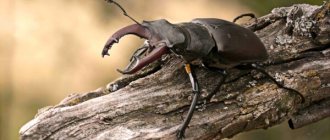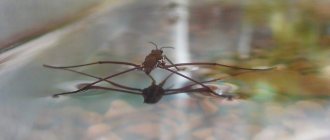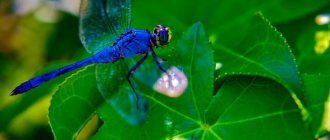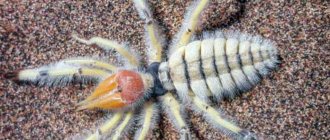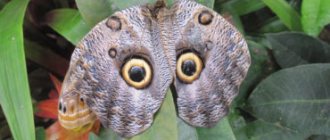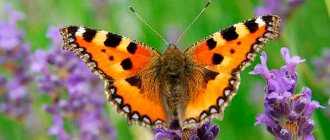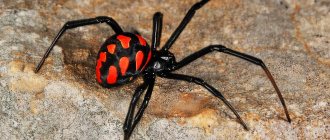The development of mountain tourism in Kazakhstan has led to the fact that people who previously knew nothing about this country began to come there. The websites of travel agencies will tell you about the delights and beauties of the Kazakhstan mountains. But beauties often come with dangers. The worst ones are those that can't be checked or planned for. These unintended dangers include snakes and spiders in Kazakhstan because they are living creatures. They can move and end up in an unexpected place. Including in a tourist tent.
Snakes try to avoid people, most species of spiders do not leave their nests (but no one knows where the next arthropod will decide to settle), but arachnids love to travel. The latter include salpugs and scorpions. All poisonous spiders and arachnids in Kazakhstan have a fairly characteristic appearance. Photos and descriptions are usually enough to recognize the danger during a “personal” meeting.
There are few poisonous spider species in Kazakhstan compared to the variety of dangerous spiders in Australia. But almost all the dangerous spiders of Europe “gathered” in it:
- thirteen-point karakurt;
- Dahl's karakurt;
- white karakurt;
- Heyracantium yellow;
- tarantula.
On a note!
In addition to these species, the country is home to harmless jumping spiders, cross spiders, funnel-web spiders, house spiders and many others. Invertebrates in Kazakhstan are poorly studied and the exact number of spiders is unknown.
Karakurt
It lives in the desert zone, which occupies almost all of Southern Kazakhstan and part of Central Kazakhstan. A medium-sized animal with strong sexual demorphism. The size of the male is about 5 mm and this animal is completely safe for humans.
Karakurt
The female is a serious opponent not only for her prey. The main Kazakh livestock are very sensitive to the venom of this 2 cm arthropod: camels and horses.
Interesting!
Cows and sheep are resistant to karakurt poison.
The Karakurt species Latrodectus tredecimguttatus is a black spider with red or whitish spots on the abdomen. Due to the number of spots, this species is called “thirteen-spotted”. Red spots can be outlined by a white stripe and then look convex. The abdomen is spherical, much larger than the cephalothorax. There is no bristles on the animal, so it looks shiny.
A karakurt bite leads to severe painful spasms throughout the body. All the signs of severe general poisoning are also present. In later stages, excitement gives way to depression. Sometimes the case ends in the death of the victim. To counteract the poison, antikarakurt serum is used.
Phalanx Spider
Photo: fresher.ru
A large spider (reaches 7 cm) of light brown color with shaggy legs - an inhabitant of the Caspian lowlands of Kazakhstan.
This insidious arthropod is called differently: salpuga, camel spider, hairdresser, bihorka.
Some names refer to the special behavior of this insect: they cut animal hair to make bedding for their nests.
Phalanx is a dangerous and unpredictable spider. They are not picky about food: they can catch and eat an insect or lizard, but they will not disdain carrion.
The phalanges are nimble and aggressive. If they are in danger, the spiders will not retreat, but will rush to attack a person or animal.
There is no poison in their saliva, but the bites are still incredibly dangerous because they can lead to blood poisoning. By biting through the skin, the phalanx injects digestive juice, which contains cadaveric poison. Once in the human blood, it quickly poisons the body and leads to sepsis.
Phalanges are very attracted to light. Therefore, lighting in the house, a lit flashlight, or light from a tent will definitely make these insects look at the light. They can easily get into a backpack or shoes left on the street.
It is difficult to kill them due to their hard shell, quick reaction and ability to jump up to a meter in height.
Throw them away with a broom, while doing this, put rubber gloves on your hands and tuck your trousers into your boots.
Karakurt Dalia
Latin name Latrodectus dahli. The difference from the previous type of karakurt is its pure black color without any inclusions. Otherwise, both types of these spiders are identical.
Karakurt Dalia
They build nests at the base of bushes, entwining them with randomly arranged threads. In the desert they prefer to hide in the shadows of animal holes. Sometimes they even coexist peacefully with the real owner of the shelter.
On a note!
Thirteen-spotted and Dahl's karakurt can interbreed with each other, producing intermediate offspring. This makes it difficult for arachnologists to identify a specific individual, but for the average tourist this does not matter. It is enough to remember that spiders with red spots and pure black ones are karakurts.
Lifestyle
The lifestyle is similar to that of the closely related Apulian tarantula (Lycosa tarantula).
Female in the ornithological reserve Bulakhovsky Estuary, Ukraine, Dnepropetrovsk region
Nutrition
The female South Russian tarantula digs a more or less vertical hole up to 50–60 cm deep, the inner wall of which is covered with cobwebs. The entrance to the hole is about the diameter of a mouse hole, the web protrudes from the surface of the soil and is reinforced by twisted stems of grass and other plants. It does not build a trapping net, but reacts to the movement of prey, which approaches the edge of the burrow and pulls the signal spider threads: it jumps out of the burrow and bites. At night it moves a short distance from the shelter. It most often hunts beetles and orthoptera, but any insects and smaller spiders can become prey.
At the entrance to the hole
Reproduction
Tarantulas mate in late summer. The male approaches the female's burrow and taps the web with his front legs. The female comes out, and then he begins to stroke her limbs with a slight vibration of his legs. Sometimes the female will still attack the male. When the male manages to calm her down, he enters the hole, where mating takes place.
Entrance to the hole
In the spring, the female lays 200–700 eggs in a cocoon, which she warms in the sun, crawling out to the edge of the burrow and sitting there upside down, with her abdomen with the attached cocoon out. After the small spiderlings hatch (usually in May), she collects them on the upper part of her abdomen and travels, from time to time dropping some of the offspring, thus distributing them. At the same time, the female can swim across small water obstacles.
The female before laying eggs. After laying eggs, the size of the abdomen decreases sharply
Female with cubs, Chelyabinsk region
Tarantulas grow during molting, molting 11 times.
Female with young
White karakurt
The only “blonde” among poisonous spiders in Kazakhstan, although its range extends throughout Central Asia and the Middle East, covering Russia and North Africa. This is a species more adapted to cold weather than black karakurts. It chooses habitats in the steppe and desert zones, so it can be found not only next to its black counterparts, but also in Western Kazakhstan.
White karakurt
The habits are similar to other spiders of the black widow genus. The appearance differs from Dahl's karakurt only in color. The white karakurt got this name for a reason. His belly is completely white. The cephalothorax is also devoid of pigment and, due to the characteristics of the chitinous integument, has a light brown color. Due to the lack of pigment, the cephalothorax appears translucent.
On a note!
Since this is the least poisonous species, it is not dangerous for an adult. But the effect of the poison is similar to the effect of black karakurt toxins. With a weakened body, even white poison can lead to death. Such cases have been recorded in the elderly and children.
Are there tarantulas in Russia?
These spiders live almost all over the world. To live they need the following conditions:
- warm;
- arid climate;
- steppe or semi-steppe terrain;
- relatively soft soil.
Some territory of our country meets these criteria, which is why tarantulas exist in Russia. However, they are common in a small part of it.
What species are found in Russia
There are no “huge tarantulas” in Russia, as some people believe; moreover, these same “giants” are actually tarantulas that prefer a humid climate, and are not found in Russia at all. The described species prefers a dry and warm climate.
On a note! The sizes of tarantulas vary between 3-10 cm.
Only the southern Russian species of tarantula lives in Russia. This is a small spider, up to 30 mm. Quite inconspicuous, has a gray color and easily hides in the grass in a vacant lot. It can live in fields, forest edges and even vegetable gardens. Individuals live in shallow vertical burrows and hunt mainly at night, so it is unlikely to step on it during the day. You can find a tarantula while cultivating a garden or field.
The South Russian species has characteristic features: relatively thick fluffy paws, two large eyes and several small ones. It is significantly different from most spiders living in Russia, so it will not be difficult to recognize it, and, therefore, avoid it.
Are Russian tarantulas dangerous?
All spiders are poisonous, and South Russian ones are no exception. However, you should not be afraid of this spider, since it cannot cause much harm to a person.
This spider needs venom glands to cope with its prey. He attacks her, injects poison with the help of chelicerae and waits for the victim’s insides to turn into a nutrient medium. But the concentration of toxins and the activity of the poison are low, and can only cope with a small victim.
Important! Tarantula venom is harmless to humans and large animals.
The sensations of the bite of this spider can be compared to the bite of a hornet, and it will only bring discomfort to a person, but will not lead to death. The bite site becomes red, swollen, itchy, the skin around it may turn yellow and remain in this state for several months. For some people, the bite can cause a high fever for several days and also leave a scar.
It is worth noting that spiders do not attack people first, since this is too big a sacrifice for them. An attack can only occur as a defense. Therefore, if you do not want to be a victim of a tarantula, behave carefully in steppe areas so as not to accidentally crush the spider.
Heiracanthium yellow
The second name of the spider is yellow sak. Cheiracanthium received the adjective “yellow” because of its dirty yellow color. Thanks to this color, it is invisible against the background of withered grass in the steppe. This spider prefers arid regions and is distributed from Central Asia to Central Europe. Today it has begun to penetrate into more northern and colder areas. The range is expanding due to climate change, as the spider prefers relatively hot regions. In Kazakhstan it can be found everywhere except Eastern Kazakhstan, where winters are very harsh.
Heiracanthium yellow
On a note!
Heiracanthium weaves a web on steppe grasses. The spider's body length is 1.5 cm. Its prey is agricultural pests with hard chitinous shells. Because of this, spider chelicerae are adapted to pierce hard covers, and human skin is not an obstacle for them.
In terms of the effectiveness of the venom and the pain from the bite, this yellow spider is equal to the wasp. A spider bite does not cause serious consequences, although pain and swelling persist for several hours.
Where do tarantulas live in Russia?
Since these spiders need an arid and warm climate, for their existence they choose steppe terrain, mainly the south of Siberia; a large number of them have also been observed near water.
In Russia, single individuals or colonies have been spotted in Kursk, Saratov, Astrakhan, Tambov, Orel, Lipetsk and even Belgorod.
On a note! There are no tarantulas in large cities; they choose semi-desert areas, so they are mostly seen in the areas of the listed centers.
Can tarantulas migrate?
By nature, spiders do not migrate. They are active in the warm season and hibernate in the winter. However, in the last few years, an expansion of the range of these spiders has been noticed. This is due to general climate change, in particular warming. So, this type of spider was seen in more western and northern areas.
Tarantula
The main poisonous spiders in Eastern Kazakhstan are tarantulas. Wolf spiders, which include tarantulas, like their mammalian namesakes, have adapted to life in any conditions. Even the winters of Eastern Kazakhstan with their -50°C do not frighten tarantulas. Spiders that are more dangerous to humans prefer warm places.
Tarantula
The most numerous species not only in the eastern part, but throughout the country is the South Russian tarantula. Due to the very favorable living conditions in the summer in Kazakhstan, this species grows 2 times larger than usual and reaches 5 cm. The color of these spiders can be greenish-gray, gray or yellow-gray.
On a note!
Tarantulas are true earth spiders that build their own burrows. They dig deep vertical “wells” in which they wait for prey. The probability of accidentally disturbing a tarantula, unlike a karakurt, is very small. But tarantulas hunt at night and can crawl into a tent in search of prey.
They do not like to settle only in the forest. They are found in forest-steppe, steppe, semi-desert and desert areas. That is, throughout the entire territory of Kazakhstan.
Karakurts have appeared in West Kazakhstan region (photo)
Now people are afraid to go out and let their children out, reports a correspondent for the portal “My CITY”.
A photo and video of an insect similar to a karakurt, one of the most poisonous spiders, appeared on the social network Instagram. A resident of the village of Asan, Baiterek district, was able to capture the insect on video.
– On July 17, such an insect was found in the courtyard of our house in Asan. Be careful. It looks like a karakurt (black widow), the author of the video captioned the video.
The post caused a storm of emotions among users. Commentators on the video said that this was really a karakurt, and some even advised burning the house so that they would not have time to reproduce.
- Yes, this is karakurt. We must burn the house down immediately! - said one of the users.
“This is a black widow, we need to kill it so that it doesn’t reproduce,” says another user.
– This is already the second case. Before this, another woman from Asan discovered these spiders in her home. The bite is fatal to humans. We don’t have an antidote for them in Uralsk, since they have never lived here before,” added another girl.
Entomologist specialist Dilda Akbaulenova said that the climate of our region is not favorable for karakurt habitat.
– Karakurt spiders live in desert and semi-desert areas. There are many of them in the neighboring Atyrau region. But the climate of our region is not suitable for them, and the weather conditions this year are not entirely favorable for them. Summer this year is cool, humid and rainy. Therefore, I believe that karakurt spiders cannot live in our region,” said Dilda Akbaulenova.
Meanwhile, the Ural Anti-Plague Station said that karakurts are still found in the West Kazakhstan region and now is the most favorable period for their reproduction.
– It’s hard to tell from the photo, but it looks a lot like karakurts. For a more accurate conclusion, we need a sample, which we examine in our laboratory. We urge people to be extremely careful, as the highest activity of karakurts is now observed. But if you are nevertheless bitten by these spiders, we recommend that you immediately consult a doctor,” said zoologist at the anti-plague station Gauhar Utebaeva.
In addition, experts said that karakurt females are most dangerous during the mating period, which occurs in June and July.
– Females migrate en masse in search of a new nest. More often they bite a person on the arms and legs. Males are much weaker; they cannot bite through human skin. Karakurts most often migrate in colonies. People need to be careful as they may not feel the bite right away. The first signs appear after 1-2 days. The muscles and stomach begin to ache. In recent years, no cases of karakurt bites have been registered in West Kazakhstan region,” said Gauhar Utebaeva.
Photos and videos from the social network Instagram
Partner news
We value each of our subscribers and readers, so please carefully read the guidelines when commenting.
Arailym USERBAEVA
Like
Tweet
Central Asian salpuga
Karakurt is not the only danger in Kazakhstan. In addition to spiders, there are salpugs (phalanxes). These are arachnids belonging to the order phalanges. Nowadays, representatives of the order are usually called salpugas, so as not to be confused with the order Phalangida, consonant with the phalanges - arachnids better known as haymakers (kosinozhki).
Central Asian salpuga
Interesting!
Although from a biological point of view, salpuga does not belong to real spiders, the name phalanx - spider - has been used in Kazakhstan since ancient times. Often in Central Asia it is called the camel spider.
The Central Asian salpuga grows up to 7 cm. The color is camouflage: gray-yellow. This is a nocturnal hunter who is able to crawl into a home at night. Salpuga differs from spiders not only in the absence of arachnoid and poisonous glands. She has 2 pairs of mandibles with teeth instead of one pair of chelicerae and 5 pairs of walking legs versus the spider’s 8 legs.
Small salpugs are not dangerous to humans, as they are not able to bite through the skin. Large ones can infect sepsis when bitten, since decaying pieces of flesh from the previous victim remain on the mandibles.
Consequences of a bite
The South Russian tarantula does not pose any particular danger to humans. Of course, he can bite, but he will never be the first to attack. Representatives of this species are not aggressive and attack only in self-defense. Therefore, it is highly not recommended to disturb the tarantula or pick it up unless absolutely necessary.
When bitten, a person may feel a burning sensation and pain. Usually, swelling forms in this area, sometimes the skin turns yellow and recovers only after a couple of months. Due to the low concentration, the venom of this arachnid does not cause death in humans.
However, if you are allergic to spider or insect bites, an allergic reaction may develop, the manifestations of which will be:
- strong pain;
- itching;
- rash around the affected area;
- general malaise;
- dizziness;
- drowsiness.
Important! If a South Russian tarantula has bitten a child, you should seek medical help immediately!



